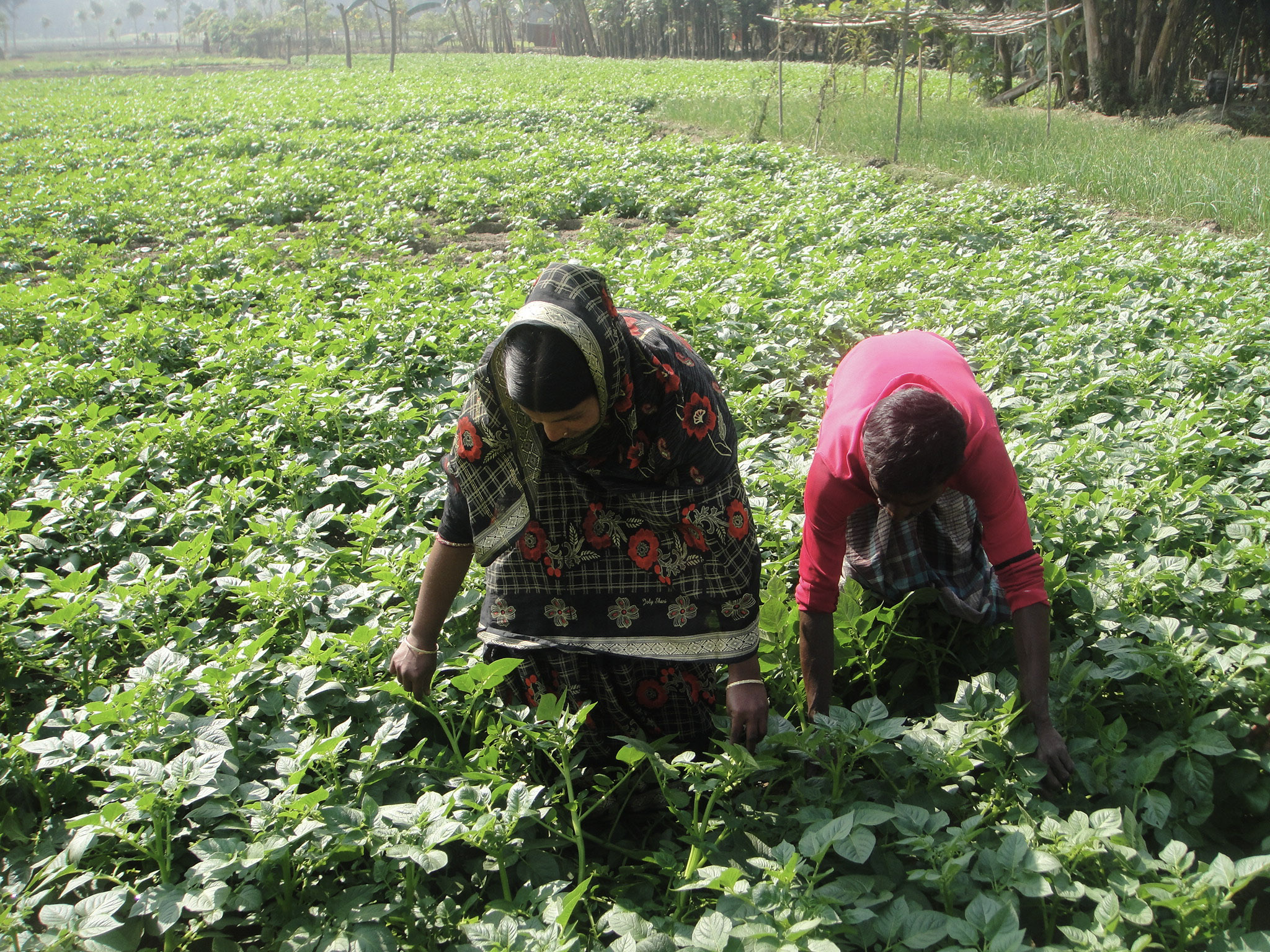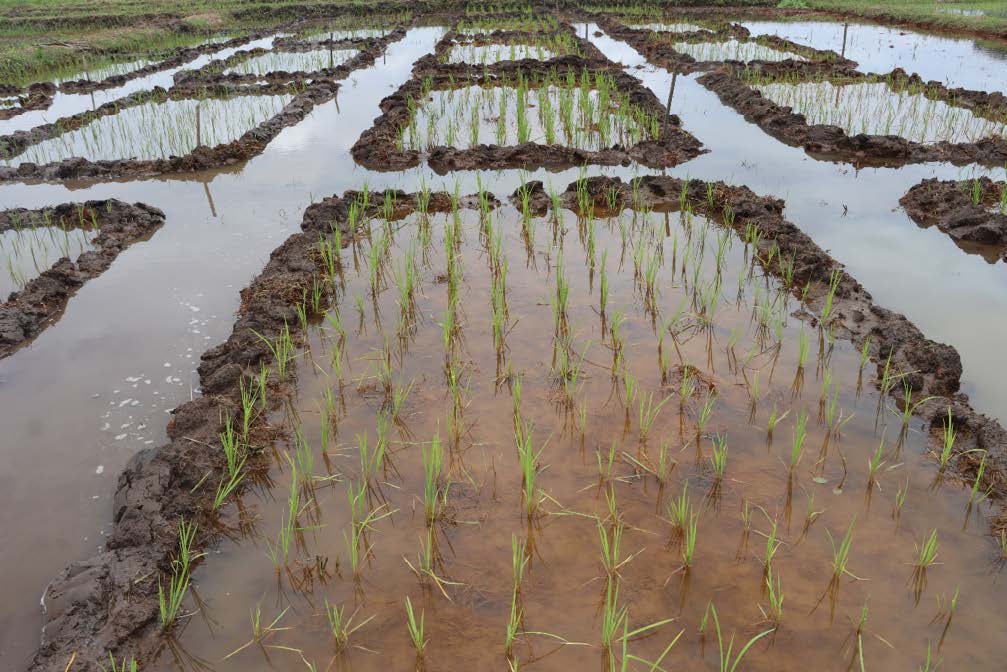Header photo: IFDC’s Mission in Action represents how the organization views the holistic nature of its work.
Contents
Letters from IFDC’s Leadership
Our Results in 2023 | Strategy & Mission
Develop Better Technologies | Catalyze Farm Productivity | Strengthen Markets | Enable Impact
Publications & Presentations | Publication Credits
Download the Annual Report
Letters from IFDC’s Leadership
IFDC’s 2023 Achievements & Future Goals: Rooted in Soil Health
Strength in Unity: A Letter from the Co-Chairs of the Board
As Co-Chairs of the Board of Directors, we are pleased to present the 2023 Annual Report. Through unwavering commitment, collaborative effort, and a shared belief in our mission, this year, we have made significant progress across all facets of our work.
A Strong Foundation of Support
The holistic “soil-to-shelf” approach we take ensures that every aspect of the agricultural chain benefits from our work. Our financial foundation has never been stronger. Our donors remain deeply committed to the work we do, allowing us to expand and innovate in transformative ways. This trust is vital as we continue to advance sustainable agricultural practices worldwide.
An Engaged and Motivated Team
At the core of IFDC’s success is our dedicated staff. Functioning at their optimal level, our team believes wholeheartedly in the mission, vision, and strategy that guide our efforts. This shared sense of purpose is evident not only in the results we achieve but also in the positive team spirit that permeates our organization. This collaborative culture enhances our ability to make a real impact in the regions we serve.
Delivering Meaningful Results
Our programs continue to reach significant milestones, and the people we work with have expressed their appreciation for the impressive changes they are experiencing. Projects like 2SCALE have achieved great results, and we are seeing tangible improvements in the communities we support. The holistic “soil-to-shelf” approach we take ensures that every aspect of the agricultural chain benefits from our work.
Ensuring Operational Growth
2023 marked a pivotal year for IFDC, not only in impactful results but also in our efforts to modernize operations across the organization. We initiated key changes to strengthen the trust and confidence of our donors, with a restructuring of administrative duties in country offices. This initiation of change ensures proper controls, enabling us to better manage our expanding portfolio with greater efficiency and transparency.
A Revitalized Headquarters
We have also invested in our own infrastructure, beginning the revitalization of our headquarters this year and focusing on improving safety and modernizing key facilities. Our Pilot Plant saw the first phase of these upgrades, which mark the beginning of broader renovation plans and further improvements, including lab upgrades, for next year. This initial progress reflects our commitment to creating a modern, safe, and efficient workspace, setting the stage for continued advancements that will drive IFDC’s mission forward in the coming years.
Looking to the Future
As we move ahead, we are confident that our strong funding, engaged staff, and impactful programs will continue to position IFDC as a leader in agricultural development. Together, we are building a future in which sustainable farming practices improve both livelihoods and ecosystems, bringing lasting benefits to communities worldwide. On behalf of the Board of Directors, we express our deepest gratitude to our staff, donors, and partners. Your commitment drives our success; we look forward to continuing this journey together.
With appreciation, Dr. Thomas G. Coon & Josephine Okot
Co-Chairs of the Board of the International Fertilizer Development Center (IFDC)

Dr. Thomas G. Coon | Co-Chair of the Board

Josephine Okot | Co-Chair of the Board
Rooted in Soil Health: IFDC’s 2023 Achievements and Future Goals by Henk van Duijn
As we reflect on the achievements and milestones of 2023, I am pleased to share with you in this Annual Report the progress and impact of IFDC’s initiatives in promoting improved or restored soil health, sustainable agriculture, and enhanced food security across the globe.
In 2023, IFDC repositioned our organizational structure to match our 2020-2030 Strategy. This reorganization emphasizes the coherence of the pillars that support IFDC’s operations and strengthens our impact in restoring soil health, in a holistic ecosystem from the lab to the field to the market – all underpinned by an enabling environment. I am proud to present a new annual report structure that reflects this mission.
Develop Better Technologies
In 2023, we made significant advancements in innovations and product development. Several research projects sought to characterize and evaluate novel formulations of fertilizers such as organo-mineral fertilizers, new potassium minerals, carbon capture technologies, and enhanced efficiency nitrogen fertilizers. Other research programs evaluated applying nutrient management practices for wide row spacing crops, green ammonia applications, expanding fertilizer deep placement technologies, and developing fertilizer recommendation practices for Ghana.
With funding from the United States Agency for International Development (USAID) through the SOILS-Space to Place (S2P) initiative, we enhanced our analytical and formulation labs and greenhouses with advanced equipment that enable us to conduct advanced research and develop innovative solutions to improve fertilizer use efficiency and soil health. The initiative explored dissemination of existing or ready-to-go soil fertility technologies for short-term impact using the S2P approach, and developed and validated targeted, localized soil fertility recommendations and decision support systems for smallholder farmers.
Catalyze Farm Productivity
The launch of the Building Resilience and Inclusive Growth of Highland farming systems for rural Transformation (BRIGHT) project in Uganda represents a landmark initiative to transform the lives of over 100,000 farm households in highland regions. Funded by the Embassy of the Kingdom of the Netherlands, BRIGHT focuses on building resilience and fostering inclusive growth. Collaborating with the Integrated Seed Sector Development Uganda (ISSD Uganda) CommonGround program, the project is laying the foundation for resilient farming systems that can withstand the challenges of climate change and contribute to rural transformation.
Additionally, our Fertilizer Research and Responsible Implementation (FERARI) program in Ghana has made substantial progress in developing a systematic approach to support the widespread adoption of balanced fertilizers. This initiative has facilitated practical policy recommendations, established the Fertilizer Platform Ghana, and engaged multiple universities and research institutes to adapt their research for practical applicability. FERARI has also provided research training to over 50 master’s and bachelor’s students, six doctoral students from Ghana, and 13 master’s students from across Africa, thereby building a new generation of scientists in the fertilizer sector.
Strengthen Markets
In 2023, our 2SCALE program continued to apply its decade-long approach as an incubator and accelerator program, launching Inclusive Agribusiness Clubs (IACs) across nine African countries. These platforms foster inclusive agricultural practices by engaging relevant stakeholders in an inclusive agribusiness space to drive sustainable and equitable growth.
The interventions of our newest market systems-based program, HortiNigeria, have led to sustainable results in crop production and productivity, increased income, value addition, and market access. The program is creatively engaging youth to demonstrate agriculture’s economic potential. Dialogues with tech-savvy entrepreneurial young people are empowering and giving voice to the next generation of Nigerian farmers.
Enable Impact
Our collaborative efforts in policy and market development have been essential to strengthening the agricultural sector. The High-Level Roundtable on Fertilizers in West Africa, held in Lomé, Togo, brought together over 300 regional fertilizer sector decision-makers to develop a roadmap for promoting fertilizer and soil health in West Africa and the Sahel. This roadmap aims to enhance local fertilizer production and distribution, and intraregional trade, thereby making fertilizer more accessible and affordable across the region and contributing to setting the stage for the 2024 Africa Fertilizer and Soil Health Summit.
Our Holistic Approach
Our four strategic areas are not separate operational functions – they work together to improve soil health. We work at key points across the entire spectrum of the food system as well as at key levels, from smallholder farmers to government bodies. Through it all, our work starts with the soil and ends with the soil – with a view of feeding 10 billion people by 2050. As we look to the future, IFDC remains committed to revitalizing degraded soils and improving nutrient use efficiency, soil health, and microbiological dynamics. We are excited about the opportunities that lie ahead and the potential to expand our impact on a global scale. By prioritizing nutrient use efficiency and soil health as a cornerstone of our efforts, we aim to cultivate resilient farming systems that can thrive in the face of evolving challenges. In closing, I want to express my gratitude to our dedicated staff, partners, and supporters who have contributed to IFDC’s success. Your unwavering commitment and passion for sustainable agriculture inspire us to push boundaries and create positive change. I am confident that together, we will continue to make a meaningful difference in the lives of farming communities around the world.
With regards, Henk van Duijn
President and CEO of the International Fertilizer Development Center (IFDC)
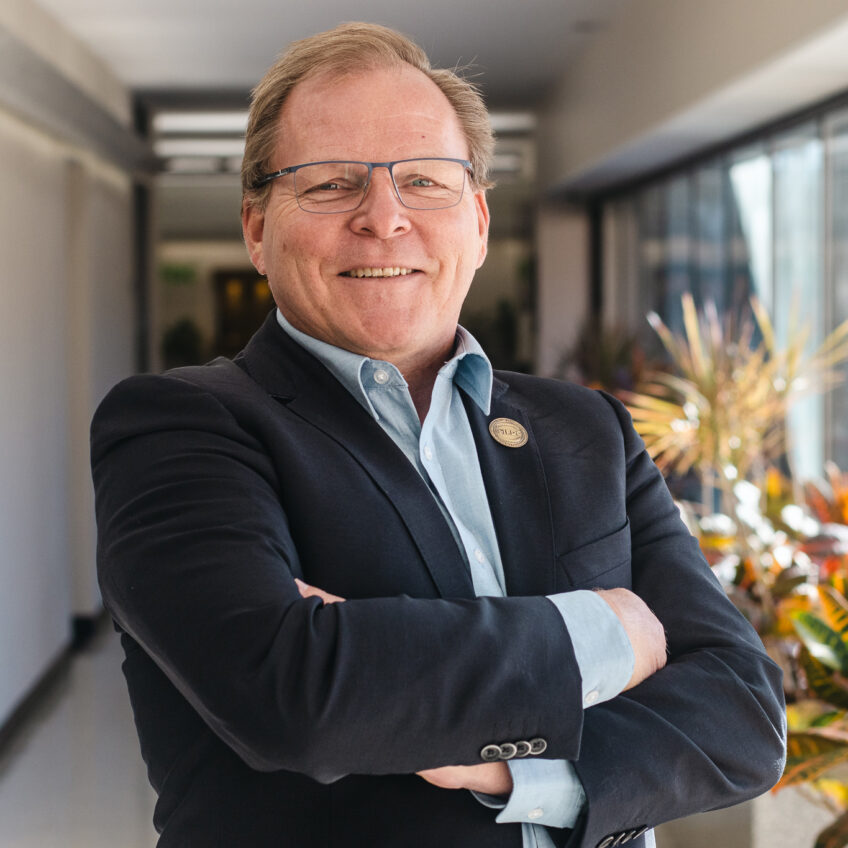
Our Reach

Results Achieved
Measuring Impact 2019-2023
| Indicators | 2019 | 2020 | 2021 | 2022 | 2023 | |||||
|---|---|---|---|---|---|---|---|---|---|---|
| Total | Projects | Total | Projects | Total | Projects | Total | Projects | Total | Projects | |
| Hectares under improved technologies | 102,661 | 17 | 193,768 | 17 | 419,652 | 13 | 641,595 | 11 | 821,907 | 20 |
| Farmer participants who applied technologies | 213,654 | 17 | 416,522 | 18 | 527,003 | 11 | 945,930 | 11 | 650,917 | 20 |
| Farmers trained (% women) | 256,685 (31%) | 20 | 267,023 (46%) | 18 | 408,557 (53.4%) | 14 | 258,566 (47%) | 14 (13) | 464,097 (38%) | 22 (22) |
| Demonstration plots established | 13,439 | 20 | 14,501 | 20 | 9,383 | 14 | 5,661 | 11 | 7,564 | 17 |
| Public-private partnerships formed | 523 | 21 | 838 | 24 | 245 | 14 | 331 | 12 | 424 | 21 |
| Outreach activities | 4,207 | 26 | 5,133 | 25 | 4,054 | 15 | 5,083 | 16 | 4,887 | 20 |
| Climate-adaptive technologies (hectares)* | 302,482 | 3 | 428,122 | 8 | 549,407 | 13 | ||||
| Private agri-enterprises that have benefited or improved as a result of interventions* | 8,376 | 6 | 7,152 | 7 | 4,956 | 12 | ||||
| New jobs created as a result of agribusiness interventions* | 14,242 | 3 | 22,316 | 2 | 7,141 | 1 | ||||
| *New indicators as of 2021 |
Comparing Performance Between 2022 and 2023
View our impressive growth, with green numbers showing 2023 results compared to the orange figures from 2022.

258,566 ▲455,406
Farmers Trained (38% Women)
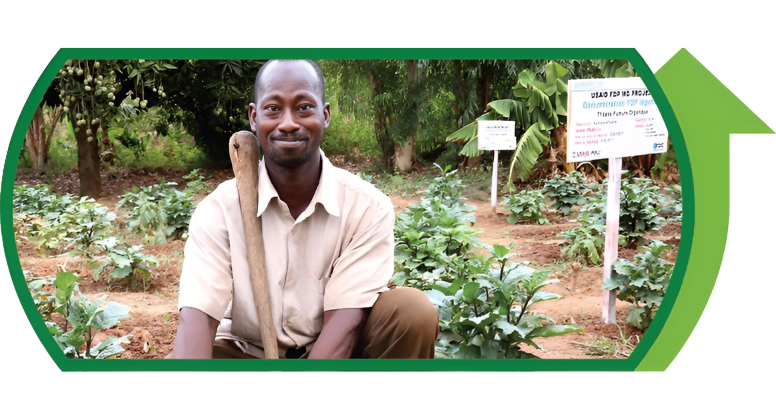
5,661 ▲ 7,564
Demonstration Plots Established
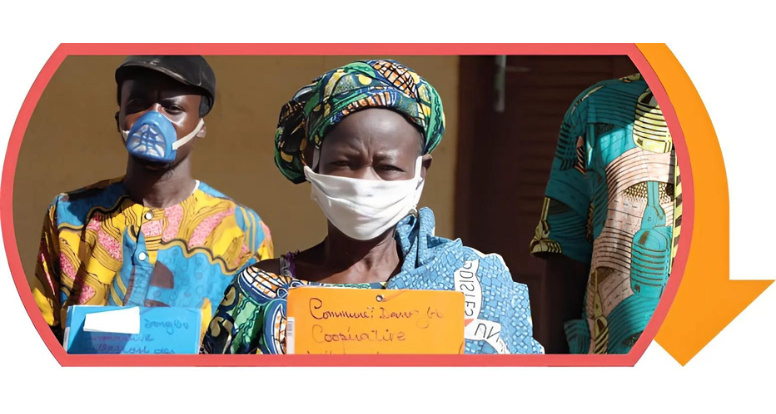
5,083 ▼4,742
Outreach Activities

641,595 ▲821,907
Hectares under Good Agricultural Practices
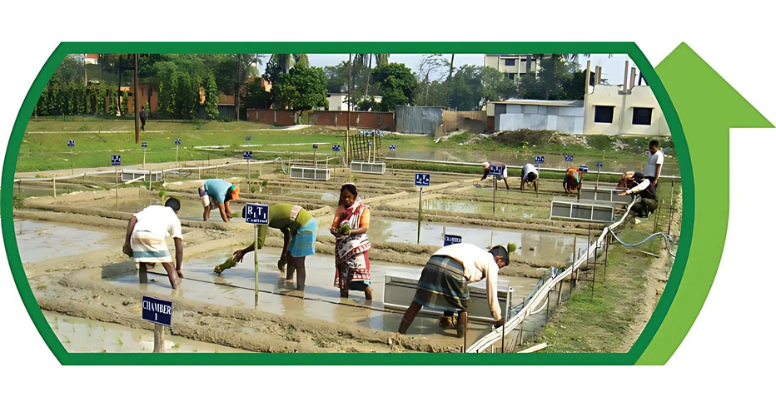
428,122 ▲ 549,407
Hectares under Climate-Adaptive Technologies

945,930 ▼650,917
Farmers Applying Good Agricultural Practices

331 ▲424
Public-Private Partnerships
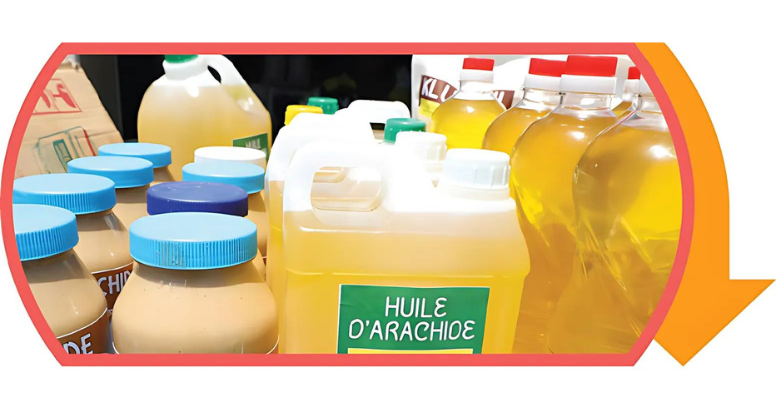
7,152 ▼4,956
Private Agri-Enterprises
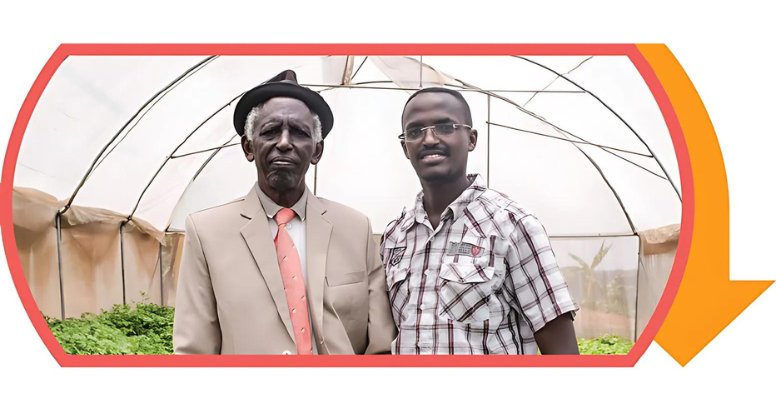
22,316 ▼7,141
New Jobs Created
Strategy & Mission
IFDC’s Working Ecosystem for Improving Global Soil Health
IFDC is dedicated to addressing the critical challenge of sustainably feeding a global population that will reach 10 billion by 2050. As the world struggles to produce a larger quantity of nutritious food in the face of accelerating climate change, improving soil health must be every nation’s top priority.
Farmers’ soils increasingly bear the burdens of climate change, population growth, and widespread food insecurity, while struggling to sustain the critical role of agriculture in economic development. With healthy soil as the foundation of a productive agricultural system, sustainable soil management practices and innovations foster resilience, improve food security, and drive economic growth.
Holistic Approach
IFDC’s holistic approach combines science-based innovations, market systems development, an enabling policy environment, and strategic partnerships to assist farmers and countries to identify and scale sustainable agricultural solutions, including improved nutrient use efficiency. These approaches boost soil health and crop productivity. With our partners, we seek to close the yield gap, eradicate global hunger, safeguard the soils on which our lives depend, and generate economic resilience for farming households and the countries in which they live.
With this focus, IFDC is driving the global effort to ensure that the world can feed itself sustainably, now and in the future.
Four Pillars to Prosperity
Demonstrated in our Mission in Action (see graphic below), our four strategic priority areas, or pillars, function as an ecosystem for improving and sustaining soil health.
By collaborating with regional, national, and international partners, IFDC tests and adapts promising technologies that improve soil health and plant nutrition based on data and soil analysis to fit the needs of smallholder farmers in different regions. This approach allows farmers to make evidence-based decisions regarding soil management practices – such as organic or mineral fertilizer application and incorporation of locally available organic resources and other soil amendments – tailored to the specific needs of their land to ensure optimal nutrient use efficiency and minimal environmental impact.
As a result, farmers increase farm productivity, profitability, and sustainability – growing a higher quantity of higher quality, nutritious food, using fewer external resources. As earning capacity grows, farmers are more willing to invest in new technologies and innovations to improve their soils and increase future incomes.
Getting the Harvest to Market
An abundant harvest requires access to markets. IFDC works to strengthen market systems so that farmers can reliably access new technologies and knowledge to improve livelihoods, reduce environmental impact, and boost climate resilience. Robust market systems drive new technologies and innovations that support the continual improvement of soil health that farmers have worked to achieve.
A successful market system requires a supportive enabling environment to thrive. IFDC enables impact by improving policies, strengthening capacity, and sharing knowledge. We provide technical support and training to help countries improve their investments in soil fertility and plant health. IFDC advocates for improved soil health by supporting regional and national dialogues, strengthening capacity to develop and implement policy regulations, improving public and private sector partners’ technical capacity, and sharing new knowledge and data related to soil health and plant nutrition.
Big Data for Small Farmers
Integrating data-driven soil management, cost-effective innovations, better farming practices, market linkages, and effective policy advocacy, IFDC creates a positive cycle of sustainable soil health improvement. We ensure that these improvements are sustainable, scalable, and beneficial for smallholder farmers, their communities, and the Earth.
Innovations & Product Development

In 2023, 16 projects were conducted, and 14 new projects were secured with 19 different donors. The projects included characterizing and evaluating various novel formulations of fertilizers such as organo-mineral fertilizers, new potassium minerals, carbon capture technologies, and enhanced efficiency nitrogen fertilizers. Projects also included evaluating nutrient management practices for crops with wide row spacing, expanding fertilizer deep placement technologies, and developing fertilizer recommendation practices for Ghana.
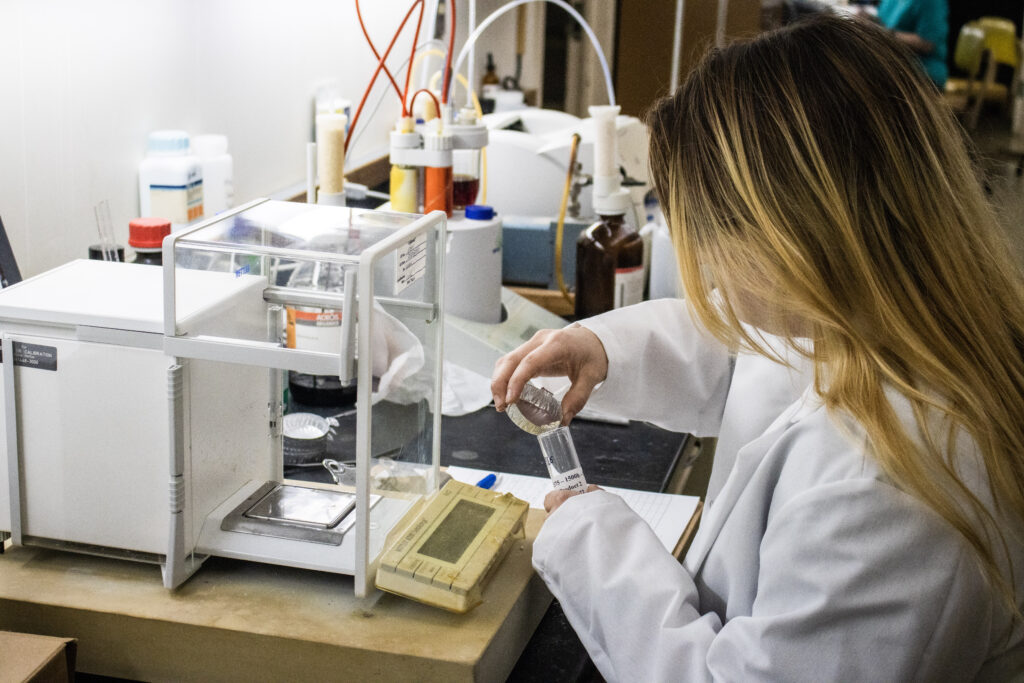
With the help of funding from USAID and the SOILS-S2P initiative, our analytical and formulation labs and greenhouses gained new capabilities. For example, microwave digestion units, autodiluters, perchloric acid fume hoods, soil and plant sample grinders, pelletizers, simultaneous thermal analysis (STA) machines, Eirich modular mixing tool kits, LI-COR portable photosynthesis measurement systems, texture analysis machines, and Skalar instruments were added to our lab. Greenhouse gas-measuring LI-COR equipment valued at $0.5 million was installed with the help of funding from an industry partner.

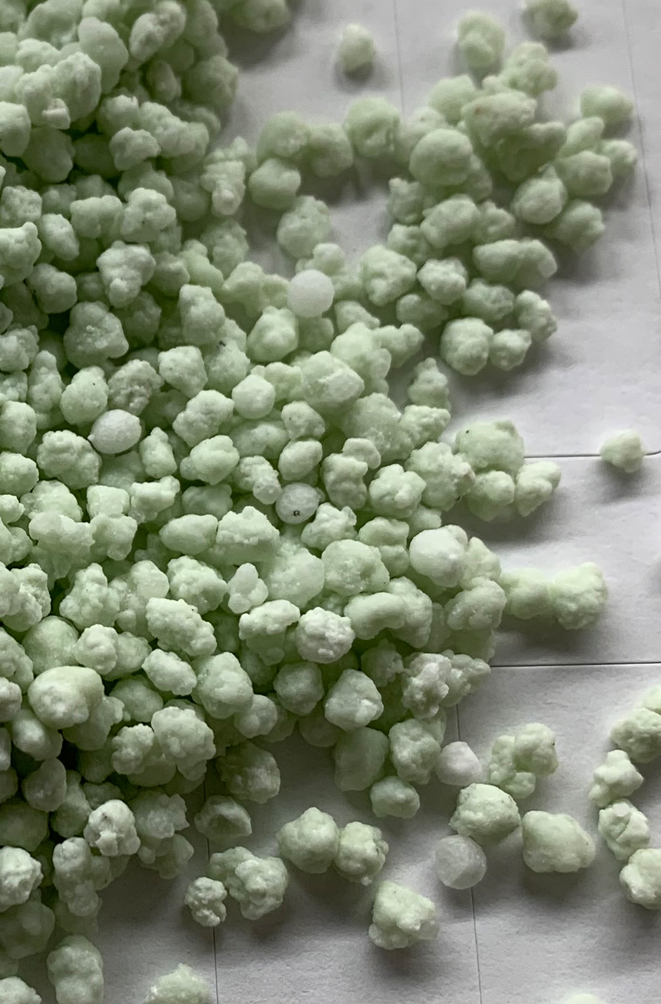
Study: Interactive Effects of Urease and Nitrification Inhibitors and Micronized Sulfur on Nitrogen Use Efficiency of Urea
While fertilizers are vital for food production, their environmental and health impacts necessitate a redesign. This study explored new micronized sulfur-containing nitrogen (MSN) fertilizers that offer potential benefits compared to traditional options. The objective is to understand the transformation and loss pathways of MSN fertilizers such as 40-0-0-13 (MSN40) and 11-0-0-75 (MSN11) in different soil types. This study evaluated the transformation and loss pathways of N from the above fertilizers with and without urease inhibitor (UI) and nitrification inhibitor (NI) in comparison to urea.
The study showed that the MSN fertilizers had slightly lower and delayed peak NH3 volatilization compared to urea. The use of UI with MSN fertilizers reduced NH3 volatilization losses more effectively than UI usage with urea, indicating potential synergies between UI and S. The hydrolysis of MSN fertilizers was slowed by the UI under both acidic and alkaline conditions, similar to hydrolysis of urea fertilizer.
The coating of MSN fertilizers with UI+NI significantly delayed NH4+ nitrification in a manner that was either better (with MSN11) or similar to what was observed with urea fertilizer. Coating of MSN fertilizers with UI or UI+NI delayed N leaching losses, indicating prolonged N availability in the soil.
These results were corroborated by a greenhouse sorghum study where MSN fertilizers with UI or UI+NI led to higher total N uptake and higher grain yield than urea fertilizer with UI or UI+NI. MSN fertilizers also resulted in higher total S uptake by sorghum, indicating improved sulfur nutrition. Overall, the study revealed MSN fertilizers had similar or better N use efficiency due to decreased N losses, and both urease and nitrification inhibitors were effective in improving MSN fertilizers’ N use efficiency.
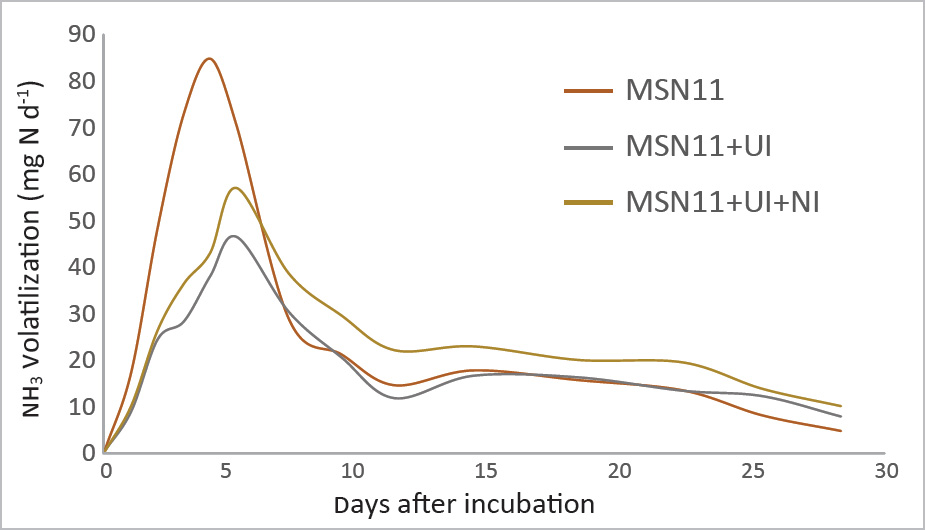
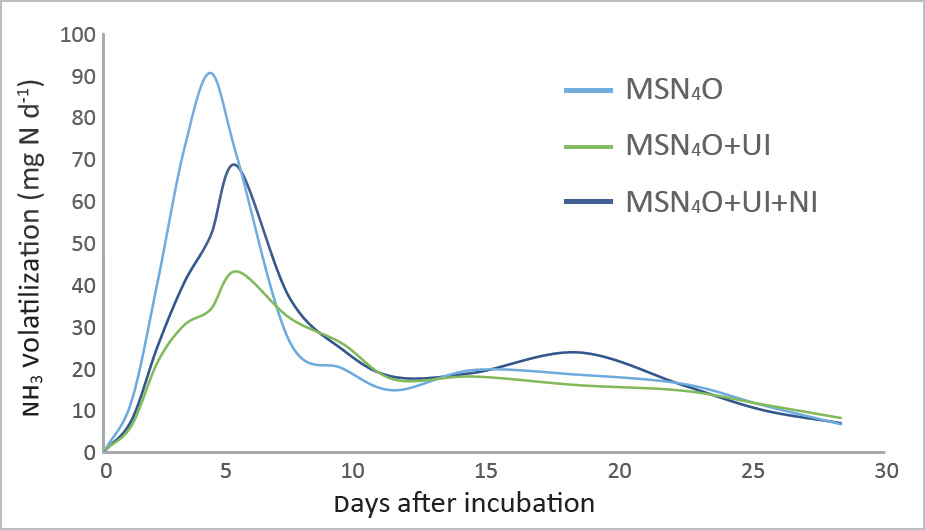
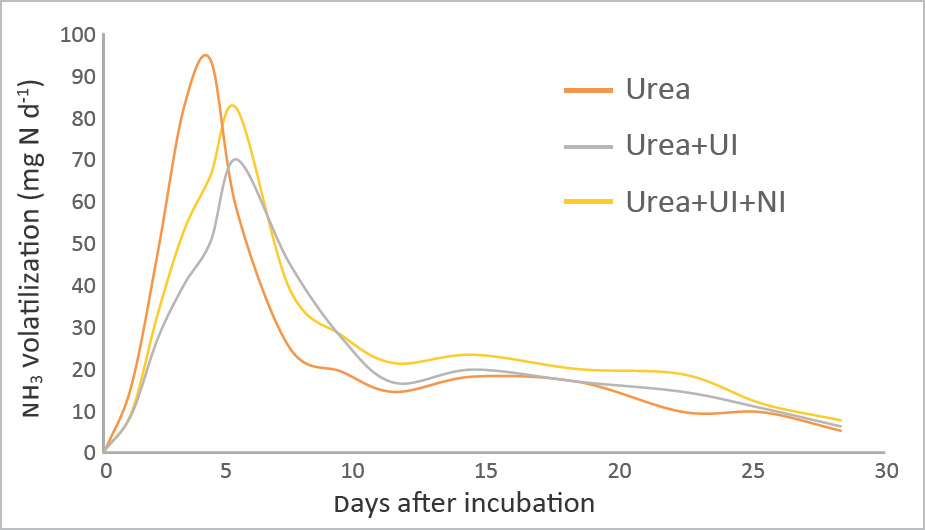
SOILS-Space to Place
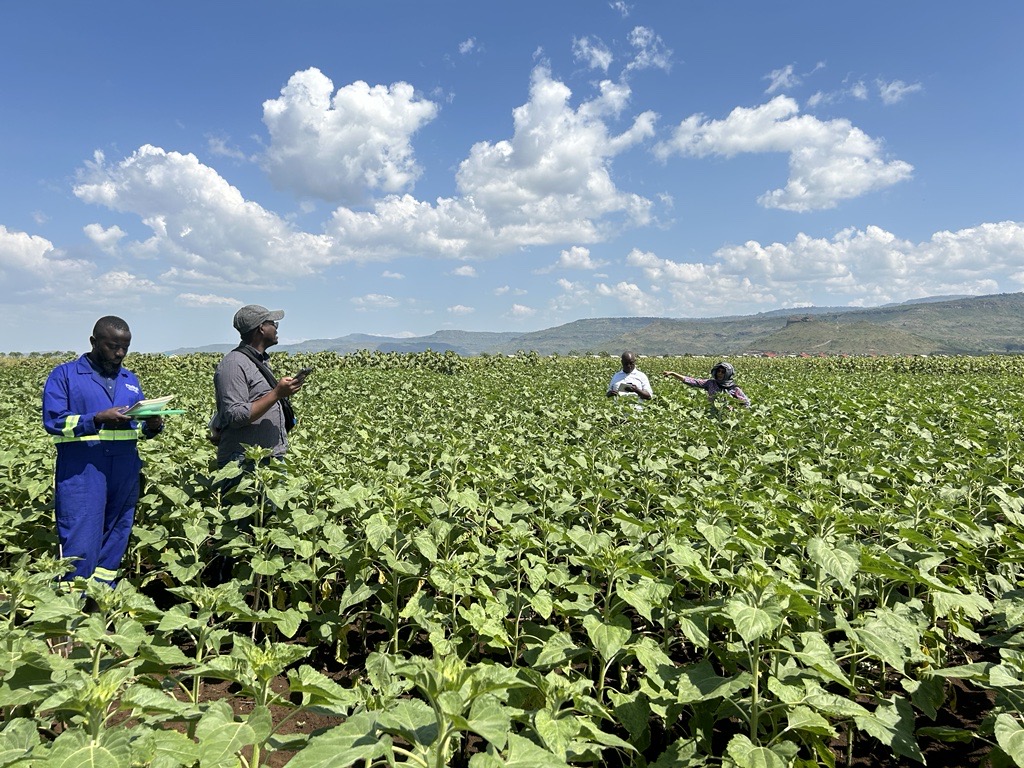
The Feed the Future Sustainable Opportunities for Improving Livelihoods with Soils (SOILS)-Space to Place (S2P) initiative, funded by the USAID Bureau for Resilience, Environment, and Food Security (REFS) and implemented by IFDC since 2022, continued developing improved, hyperlocalized soil and fertilizer recommendations for sub-Saharan Africa. The goal is to substantially reduce fertilizer wastage at the farm level by improving use efficiency for optimal economic returns with better, targeted soil fertility technologies and management practices. The approach enables the delivery of spatially appropriate soil fertility management recommendations, guided by soil maps (Space) combined with farm(er)-level characteristics (Place). The initiative focuses on agro-pastoral, mixed cereal-root crop, and maize mixed production systems in the anchor countries of Malawi, Tanzania, Uganda, and Zambia, with transcending boundaries in Kenya and Mozambique. Partners include ISRIC – World Soil Information, Wageningen University & Research, World Vegetable Center, International Maize and Wheat Improvement Center (CIMMYT), Food and Agriculture Organization of the United Nations (FAO), One Acre Fund, AGRA, national agricultural research institutions, U.S. universities and research institutions, and private firms, such as OCP and Meridian.
Two types of activities were initiated through SOILS-S2P in 2023:
- Dissemination of existing or ready-to-go soil fertility technologies for short- to medium-term impacts for the 2022-23 cropping season in Malawi, Tanzania, and Zambia. This activity was implemented in partnership with USAID’s Southern Africa Accelerated Innovation Delivery Initiative (AID-I, led by CIMMYT) to deliver soil fertility and fertilizer related information and reached nearly 8,000 farm households in Zambia, Malawi, and Tanzania (“Unleashing the Power of Soil” below).
- Development and validation of targeted, localized soil fertility recommendations and decision support systems for smallholder farmers. Crop nutrient response trials were conducted in partnership with national agricultural research institutions in Malawi, Mozambique, Tanzania, Uganda, and Zambia to determine yield response to macro (NPK), secondary, and micronutrients. Focus crops included potato, maize, rice (upland and lowland), beans, soybean, groundnut, and sunflower. The trial design considers a broader spectrum of nutrient responses, which allows more precise, tailored recommendations to be made to meet the diverse soil and crop requirements across sub-Saharan Africa. A total of 814 extensive researcher-managed fertilizer optimization trials at farmers’ fields and 27 intensive researcher-managed fertilizer optimization trials were conducted in Kenya, Malawi, Mozambique, Uganda, Tanzania, and Zambia across various crops and agroecological zones.
Other Soils-S2P Activities
The SOILS-S2P partnership developed a prototype decision support tool using legacy soil maps and information, which can be accessed at https://shiny.wur.nl/content/e878ae35-c793-40cf-ac74-8aa3804a0895/. In addition, with assistance from USAID/Tanzania and in partnership with the Feed the Future Tanzania Sera Bora Project, a preliminary feasibility assessment was conducted on the establishment of a urea plant in Tanzania using existing natural gas resources. The initiative also collaborated with FAO for soil mapping in Zambia and will be working closely with the SoilFER program on effective decision support tool development and deployment in the country.
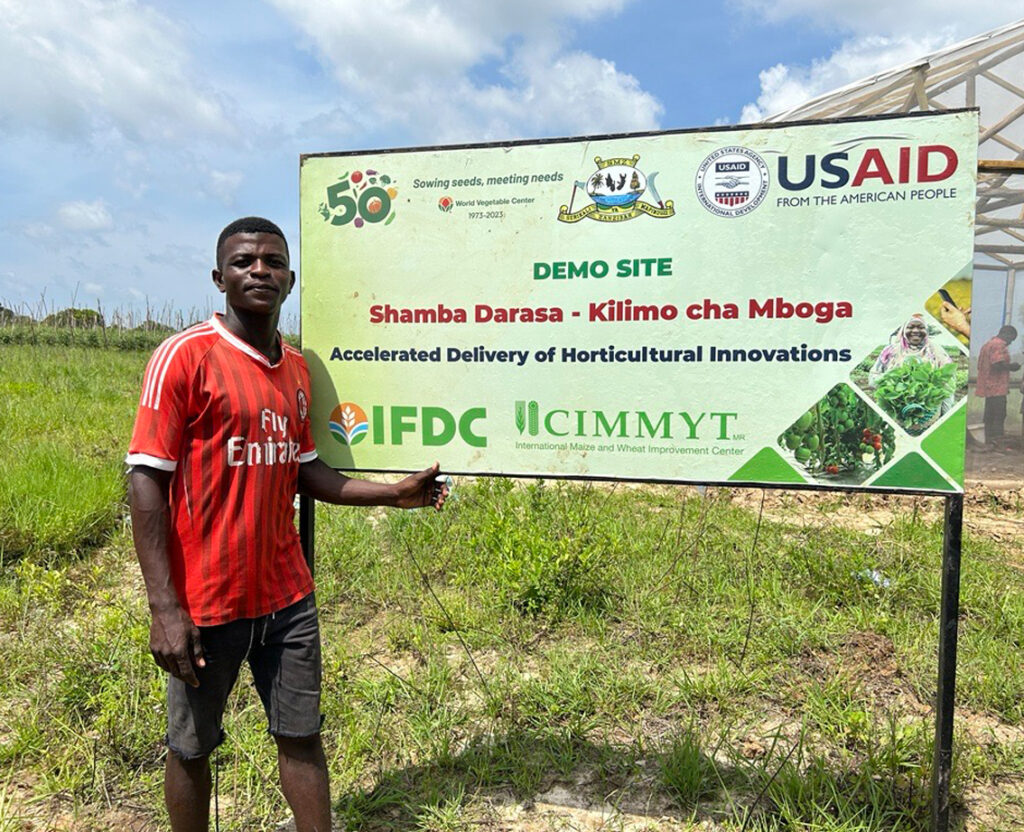
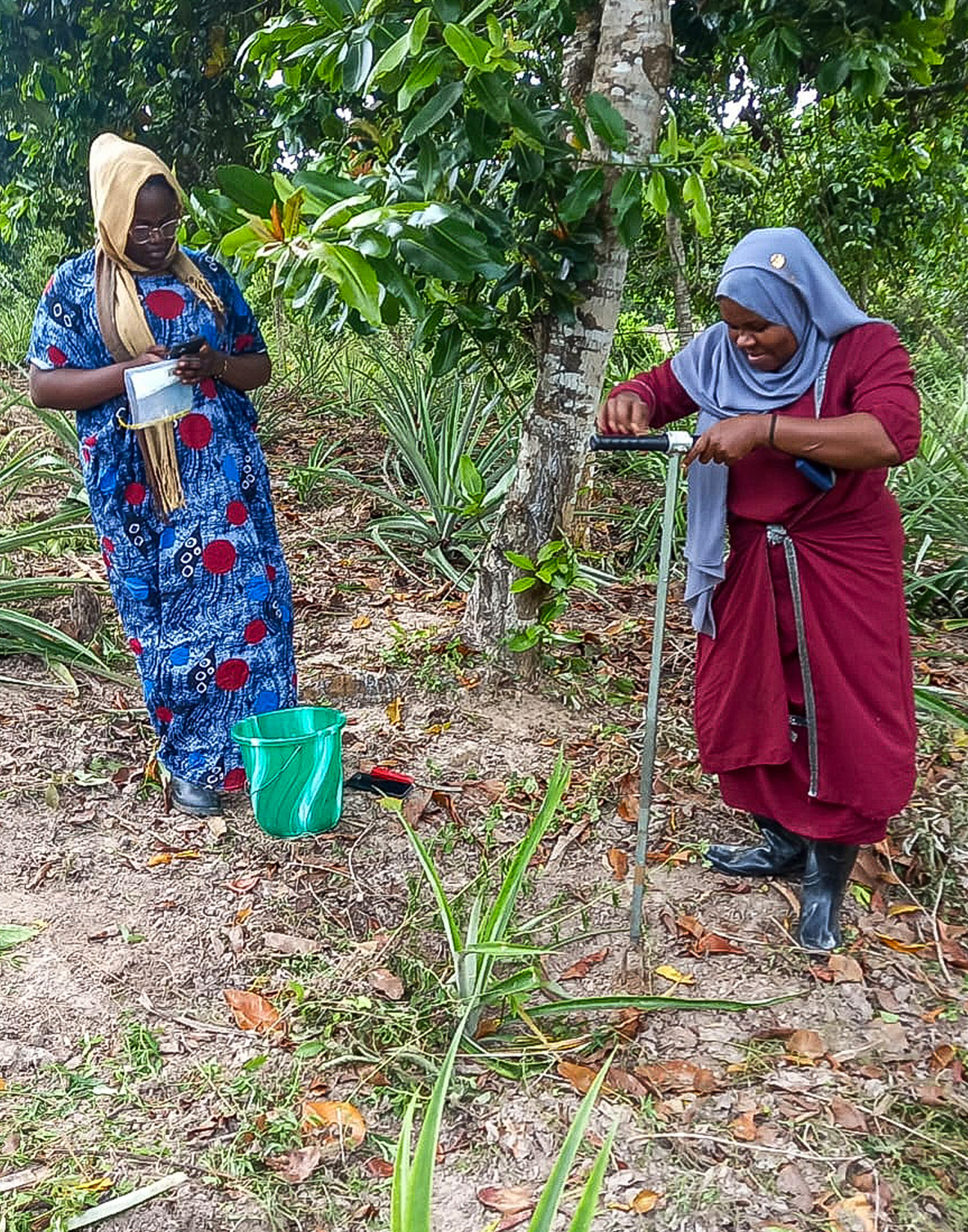
Unleashing the Power of Soil: Soil Sampling, Testing, and Mapping Activity in Zanzibar
The partnership between IFDC, WorldVeg, and local collaborators in the USAID REFS-funded Space to Place and CIMMYT-led Accelerated Innovation Delivery Initiative (AID-I) project is spearheading a revolutionary transformation of the agricultural landscapes in Zanzibar. Through meticulous soil sampling, comprehensive testing, and the establishment of a soil fertility database and mapping, this collaboration combines the expertise and resources of various institutions to drive horticultural innovation and enhance soil fertility management on Zanzibar Island.

Implemented in partnership with the local soil mobile testing firm Live Support Systems Limited (LSSL) and the Zanzibar Agricultural Research Institute (ZARI), this endeavor aims to empower farmers with essential knowledge about soil health and effective management practices to ensure sustainable and optimized horticultural practices. At the core of this initiative is the development of a soil map and an ISRIC-based soil data portal, serving as a centralized repository for vital soil-related information specific to Zanzibar.
By creating the soil map and data portal, this activity seeks to provide a valuable resource for farmers, policymakers, and researchers, offering crucial insights for effective soil management and agricultural planning, with a particular focus on the horticulture sub-sector in Zanzibar.
Fertilizer Research and Responsible Implementation – FERARI (2019-2024)
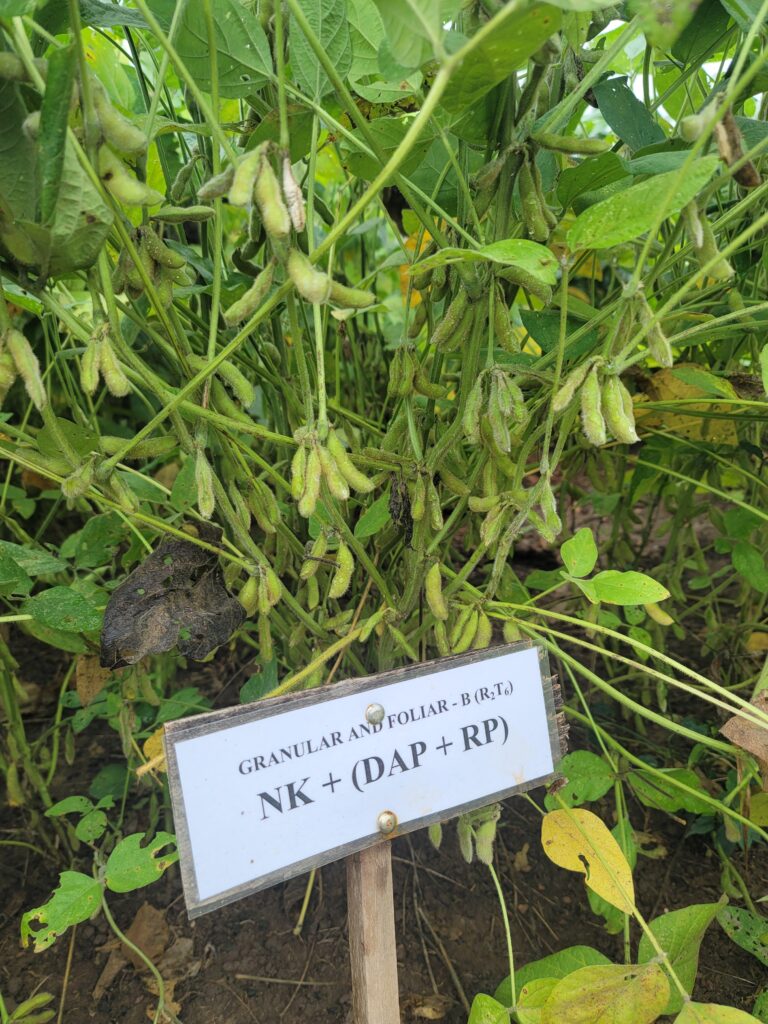
Ghana 2019-2024 | Budget: U.S. $7.1 million | Donors: Mohammed VI PolytechnicUniversity (UM6P), OCP, and institutional contributions
Implementing Partners: UM6P, OCP, Wageningen University & Research (WUR), University of Liège, University of Ghana, Kwame Nkrumah University of Science and Technology, University for Development Studies, University of Energy and Natural Resources, Akenten Appiah-Menka University of Skills Training and Entrepreneurial Development, the Ministry of Food and Agriculture (Ghana), and research institutes of the Council for Scientific and Industrial Research.
FERARI is an international public-private partnership in Ghana that integrates an on-the-ground implementation program to develop the fertilizer value chain with transdisciplinary research by M.Sc. and Ph.D. graduates, supervised by staff from internationally renowned universities, and build the research capacity at the involved institutions. The overall objective of the program is to develop a systematic science-based approach to support widespread adoption of site-specific balanced fertilizers by farmers in the less developed markets of sub-Saharan African countries, specifically Ghana, to improve their food and nutrition security.
FERARI’s 2023 achievements and results
- Supported the government of Ghana with practicable recommendations for the implementation of crop sector policies, particularly in the Planting for Food and Jobs program and the Ghana Fertilizer Expansion Program (GFEP).
- Demonstrated the feasibility for research to guide implementation of actual activities on the ground.
- Established over 450 on-station, on-farm, and farmer-managed fertilizer response trials of maize, rice, and soybean and conducted demonstrations to about 2,000 farmers.
- Facilitated the establishment of the formally registered, multi-stakeholder Fertilizer Platform Ghana (FPG), which brings private and public sector players together toward transforming Ghana’s fertilizer sector.
- Engaged six Ghanaian universities and two research institutes to adapt their research approach for the practical applicability of their research outcomes.
- Built a new generation of scientists in the fertilizer sector by providing research training to over 50 master’s and bachelor’s students and six doctoral students from Ghana and 13 master’s students from across Africa.
- Facilitated the establishment of a Fertilizer Science and Soil Health master’s program and an International Modeling and Mapping Center at University of Cape Coast.
- Developed advanced scientific methodologies, including soil-crop modelling and mapping methodologies and machine learning statistics, to analyze crop responses to fertilization under the data-poor conditions of Ghana.
- Provided responsible fertilizer recommendations to the government, private sector players, and Ghanaian farmers, including the addition of sulfur (S) to NPK to enhance crop yield and economic viability of fertilizer use by farmers.
Further information, including newsletters, research reports, policy briefs, and scientific publications, can be found at https://ifdc.org/projects/fertilizer-research-and-responsible-implementation-ferari/.

Pilot Plant: Projects, Repairs, and Upgrades
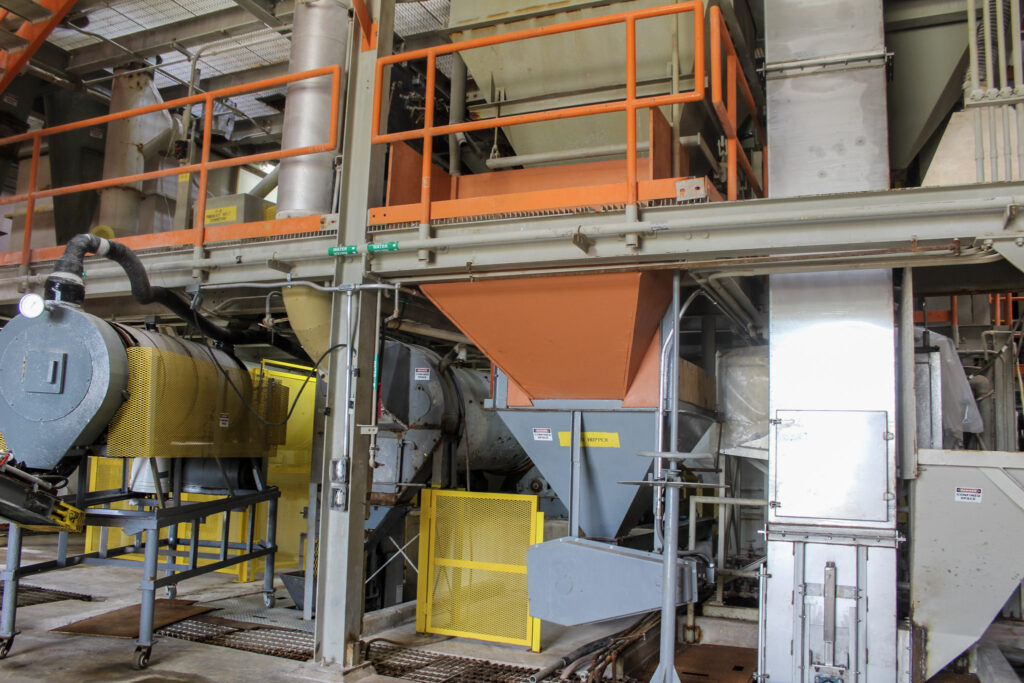
In 2023, the pilot plant and engineering teams conducted seven projects for five industry partners. The projects included:
- Granulation projects
a. Granulation of phosphate fertilizers with slow- and controlled-release characteristics.
b. Granulation of minerals into nitrogen fertilizers. - Product characterizations and evaluations
a. Various product characterizations and physical properties testing for multiple customers. - Engineering
a. Consulting on explosivity testing.
b. Feasibility studies of nitrogen and phosphate fertilizer production.
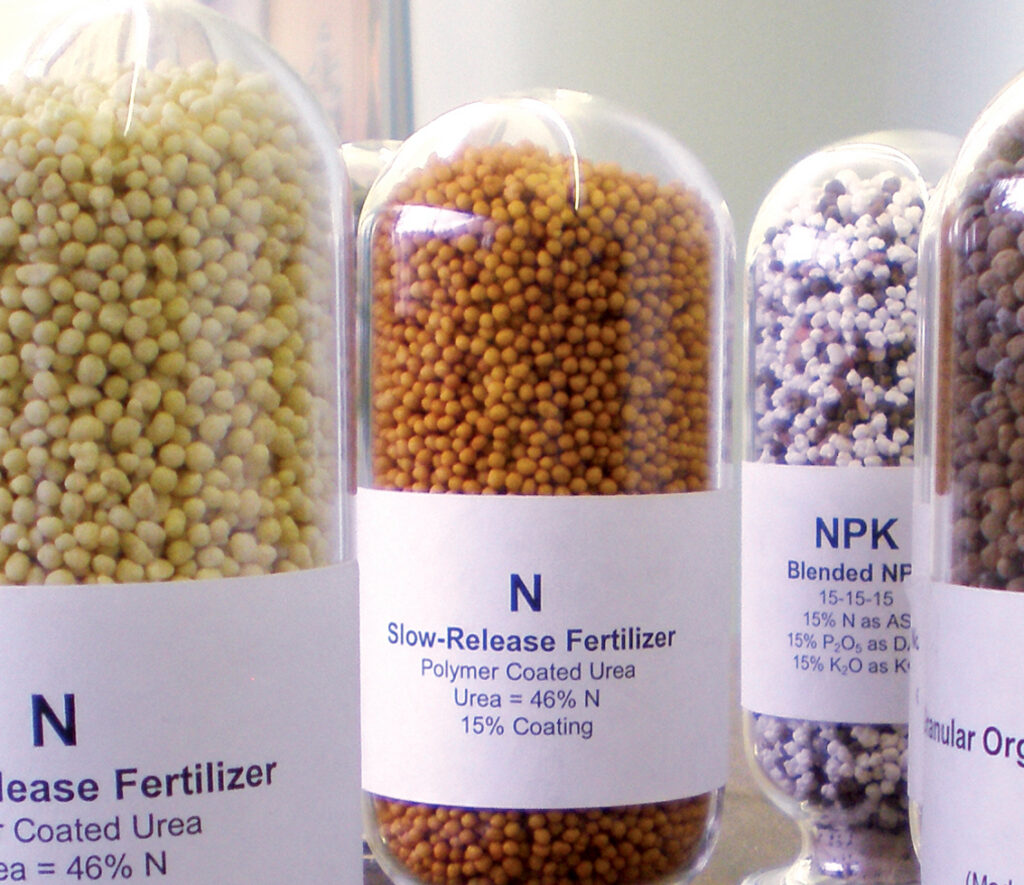
The pilot plant facilities have also undergone significant repairs and upgrades, some of which will continue into 2024 and beyond. A few examples of this include installation of new equipment, such as bucket elevators, upgrades to electrical systems and infrastructure, and improvements to the physical properties laboratory.
Catalyze Farm Productivity
Swipe or use keyboard arrows to navigate. Click project for more info.

Focus on Success: ASPEN
Innovation in the Mechanization of Fertilizer Deep Placement
Fertilizers contribute to a 40-60% increase in crop productivity to feed the growing population. Foodgrain production in India has more than tripled, with only a meager increase in cropping area and use of irrigation facilities. This is because of a significant 14-fold increase in fertilizer consumption. The annual fertilizer subsidy of U.S. $28 billion has allowed the country to become the second largest consumer, producer, and importer of fertilizers.
However, the nutrient use efficiency (NUE) in India is less than 30%, causing a 70% loss in the fertilizer applied, which has an adverse impact on soil and environmental health, as well as livestock and human health. This causes environmental pollution and climate change and leads to high economic losses of around U.S. $15 billion annually. Broadcasting of fertilizers and the use of traditional water-soluble fertilizer sources are the key issues leading to a low NUE in the country.
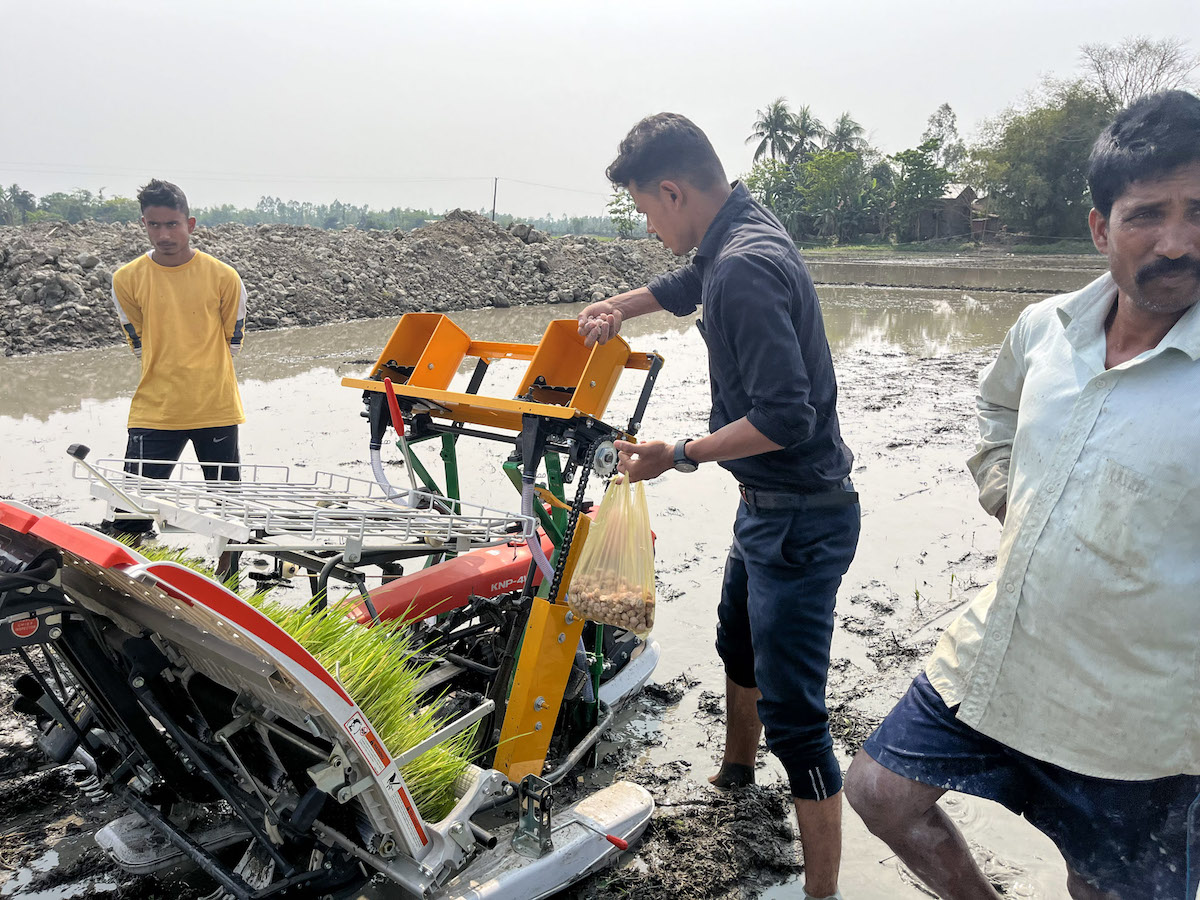
As part of the Assessment of State Fertilizer Scenario and Promoting Efficient Nutrient Management (ASPEN) project, IFDC, in collaboration with the Department of Agriculture, Government of Assam, Punjab Agricultural University, Feed the Future, USAID, and National Agro Industries, has developed a seed-and-fertilizer drill.
This innovative machine transplants paddy rice and places the recommended fertilizer briquettes (NPKZnS) at the desired depth of 5‑6 centimeters. The mechanization of fertilizer deep placement (FDP) is helping improve rice productivity by 30% and reduce urea use by 20%. The innovation lowers nitrogen losses due to runoff and volatilization and reduces nitrous oxide (greenhouse gas) emissions from the soil.
Over the past year, we have made remarkable strides in our agricultural journey, witnessing not just growth, but also the seamless integration of market systems development (MSD), research, and soil health into our program delivery at IFDC. Through strategic partnerships and innovative strategies, we have effectively merged research insights on soil health with our MSD initiatives, bolstering the resilience and productivity of farming systems.
By embedding soil health management practices into market-oriented agricultural value chains, we are promoting sustainable production and empowering smallholder farmers, particularly women and youths, to thrive in dynamic markets. This integration has yielded tangible outcomes such as increased yields, enhanced soil fertility, and improved market access, advancing broader agricultural development objectives.
As we forge ahead, our commitment to harnessing the synergies between MSD, research, and soil health remains unwavering, driving positive change and prosperity in the agriculture sector.
Strengthen Markets
Swipe or use keyboard arrows to navigate. Click project for more info.

Focus on Success: HortiNigeria
Rural women are the backbone of many communities, particularly in developing countries. They are often responsible for a variety of tasks, from managing households and raising children to farming the land. Their role in agriculture is significant, as they contribute to food production, food security, and the overall well-being of their families and communities.
Despite being indispensable, rural women encounter numerous challenges. Access to education, healthcare, and economic opportunities can be limited, and traditional gender roles often perpetuate inequality. Discrimination, a lack of land ownership, and limited access to resources continue to hinder their progress.
The HortiNigeria program is committed to promoting inclusivity in the horticulture sector, with the specific aim of involving 50% youth and
40% women in all of its components. As a result, this initiative has become a catalyst for empowering women in selected local government areas within Kano and Kaduna states in Nigeria. More than 20,000 women have received training in seedling production for various crops within the value chains of tomato, pepper, onion, okra, sweet corn, watermelon, cabbage,and cucumber.
This training was part of an event known as “HerHortiVantage,” which focused on empowerment and income generation, imparting the valuable
lesson that participation in agriculture is not limited to farming, as there are several income-generating activities that do not require extensive land use and can be pursued from the comfort of their homes.
Women in Kano and Kaduna have come together in groups to commence seedling production as a viable business opportunity, giving them a sense of identity and purpose. Additionally, participants also initiated the process of opening bank accounts to manage their profits.
These women have set ambitious goals for their future endeavors. Some aspire to venture into raising livestock, and others intend to expand their
involvement in farming on a larger scale. Still, some women plan to continue producing seedlings, serving as suppliers to nearby seed offtakers
and farmers. This initiative is not only empowering rural women, but also fostering a spirit of entrepreneurship and self-sufficiency among them.
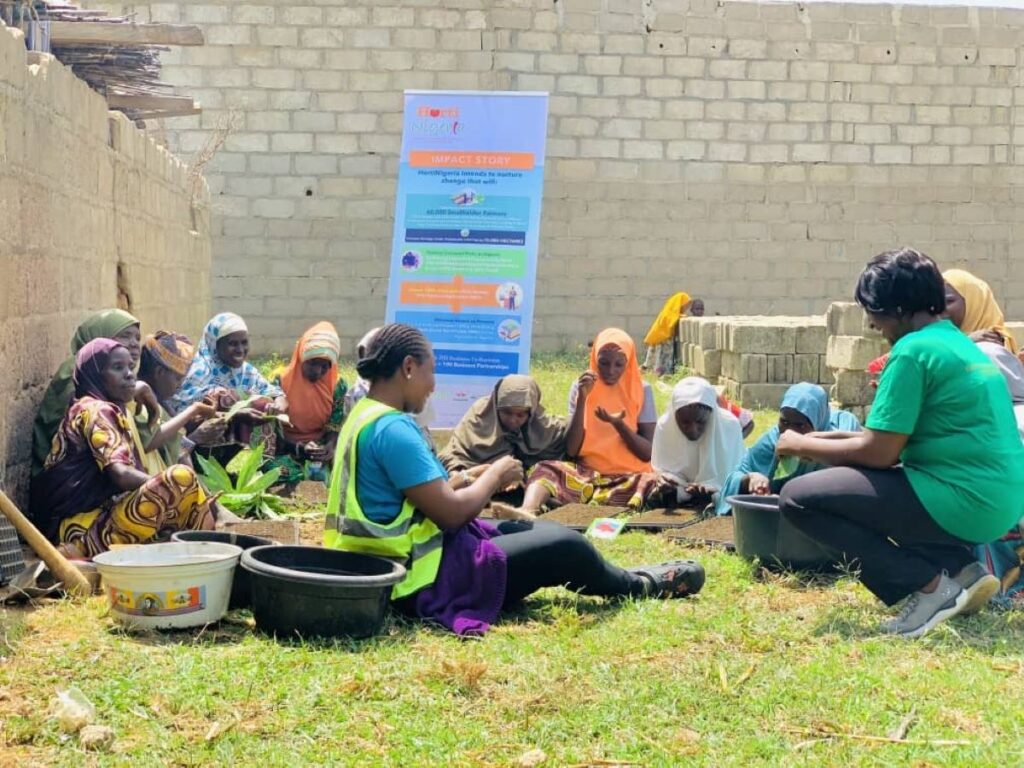
Mallama Hadiza Ali Rabo, leader of the Nasara Women’s Group, said, “Our plan is to plant seedlings, harvest, and repeat the process until it is
bountiful. We want our children to go to school and have adequate school supplies. Now that we have the knowledge to reinvest, we won’t just spend the money we receive. Through the group, we manage time efficiently, as we take turns looking after the seeds.”
The goal of the HortiNigeria program is to build a sustainable and inclusive horticulture sector to boost food and nutrition security, and rural women are playing a crucial role in ensuring this is successful.
One of the four pillars of IFDC’s work is to enable impact. Through its project interventions, IFDC seeks to create a favorable environment for making profitable investments in fertilizer and soil health and aims to sustainably increase agricultural productivity.
Achieving these goals will translate to efficient markets, higher incomes, and improved food security, hence contributing to better lives for current generations of smallholder farmers while preparing to pass on healthier soils to future ones.
Enabling Impact
Swipe or use keyboard arrows to navigate. Click project for more info.
Focus on Success: Dundël Suuf
In Orkadiéré, a village located about 70 kilometers from Matam, Sadio Ba, an okra producer, tells us about his adventure using the microdosing technology. In 2019, Ba decided to visit one of his friends living in Mboro. Once there, he discovered that his friend was involved in the production of other crops, in addition to okra, as well as livestock and fish farming. Back in his village, having such a farm had been Ba’s
dream, but unfortunately, he did not have the means to make it happen.
During the 2021-22 rainy season, Ba was selected as a beneficiary by the Regional Directorate of Rural Development (DRDR) of Matam as part of the Feed the Future Senegal Dundël Suuf project for scaling up the microdosing technology. He planted 1 ha of okra with this fertilization technology. Ba is pleased with the choice he made. Since learning about microdosing, his yields have continued to rise, while the amount of fertilizer used has decreased compared to his traditional fertilization practice.
“Microdosing is both economical and profitable. Instead of the 600 kg/ha I normally use with broadcast fertilizer, I only needed 219 kg/ha with
microdosing. In addition, my yield went from 9 to 14 mt with microdosing because the fertilizer acts directly on the plants. With microdosing, I have decreased the amount of fertilizer used and increased my yields.”
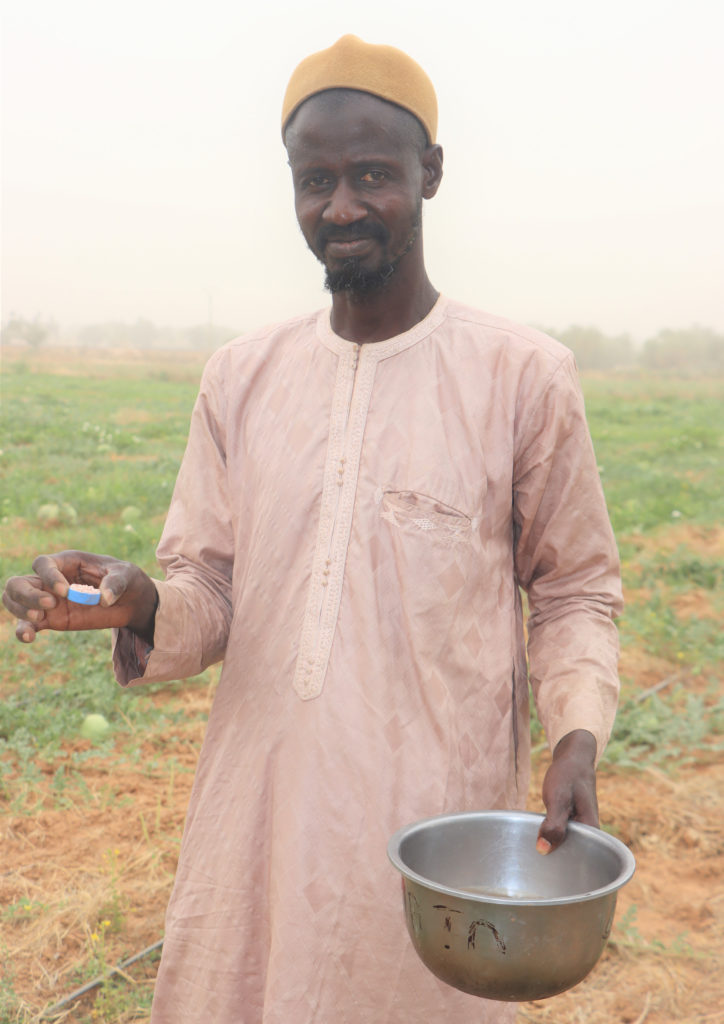
With the savings on fertilizer and the income from selling okra, Ba is realizing his dream. “Support from the Dundël Suuf project has allowed me to invest my income from growing okra in other crops, such as watermelon and eggplant, but I have also increased my okra production. In addition, the profits generated by okra have contributed to the establishment of a poultry business,” he shares.
Ba invested 370,000 CFA francs (about U.S. $624) in constructing a chicken house and 90,000 CFA francs (about U.S. $152) in purchasing chickens and three bags of feed at 20,000 CFA francs (about U.S. $34) each.
Satisfied with microdosing, Sadio Ba recommends that all farmers apply microdosing. He says he is ready to train other producers in the area to take advantage of this technology.
Publications and Presentations
The following technical publications and presentations are a representation of the work our highly skilled researchers and field experts accomplished in 2023. These, and much of our other research, can be accessed at the IFDC Hub.
Publications
Adzawla, W., E.D. Setsoafia, S. Amoabeng-Nimako, B. Kwesie, W.K. Atakora, O., Camara, M. Jemo, and P.S. Bindraban. 2023. Fertilizer Use Efficiency and Economic Viability of Fertilizer Use by Farmers in Ghana. IFDC FERARI Policy Brief No. 11.
Akter, M., M.H. Kabir, M.A. Alam, H.A. Mashuk, M.M. Rahman, M.S. Alam, G. Brodie, S.M.M. Islam, Y.K. Gaihre, and G.K.M.M. Rahman. 2023. “Geospatial Visualization of Ecological Risk Assessment of Heavy Metals in Rice Soil of Newly Developed Industrial Zone in Bangladesh,” Sustainability, 15(9):7208. https://doi.org/10.3390/su15097208
Aremu, T.B., C.Y. Freeman, A. Laamari, Y. Iddrisu, W.K. Atakora, and P.S. Bindraban. 2023. “Informing the Design of a Multistakeholder Platform in Ghana using Stakeholder Analysis and Social Network Analysis,” Outlook on Agriculture, 52(2):126-139. https://doi.org/10.1177/00307270231165323
Bindraban, P.S., W. Atakora, W. Adzawla, K. Anselme, M. Asante, V. Avornyo, M. El-Gharous, R.A. Gyamfi, H. Sakyi, A.F. Kwarteng, P. Ofori, and H. Sakyi. 2023. FERARI Research Demonstrates Addition of Sulphur to NPK Increases Maize Yields in Ghana. IFDC FERARI Policy Brief No. 10.
Chahar, M., R. Majumdar, R. Joon, J. Gogoi, and Y.S. Saharawat. 2023. “Nursery Management for Transplanted Crops,” Assam Agribusiness and Rural Transformation-ARIAS Society
Chahar, M., R. Majumdar, R. Joon, J. Gogoi, and Y.S. Saharawat. 2023. “Nutrient Management Practices in Rice, Vegetables and Mustard Crops,” Assam Agribusiness and Rural Transformation-ARIAS Society
Chongo, M., J. Wendt, M. Ngunjiri, M. Hafidi, and M. Jemo. 2023. “Agronomic Efficiency of Activated Rock Phosphate Granules on Maize Plants Treated with Mycorrhiza in a Calcareous Vertisol of Kenya,” Journal of Soil Science and Plant Nutrition, 23:2687-2693. https://doi.org/10.1007/s42729-023-01225-3
Dimkpa, C., W. Adzawla, R. Pandey, W.K. Atakora, A.K. Kouame, M. Jemo, and P.S. Bindraban. 2023. “Fertilizers for Food and Nutrition Security in Sub-Saharan Africa: An Overview of Soil Health Implications,” Frontiers in Soil Science, 3:1123931. https://doi.org/10.3389/fsoil.2023.1123931
Fugice, J. 2023. “EnGRAIS Lab Assessment Validation: West African Committee for Fertilizer Control (WACoFeC) Implementation of Harmonized Regional Fertilizer Regulation.”
Gaihre, Y.K., W.D. Bible, U. Singh, J. Sanabria, and K.R. Baral. 2023. “Mitigation of Nitrous Oxide Emissions from Rice-Wheat Cropping Systems with Sub-Surface Application of Nitrogen Fertilizer and Water Saving Irrigation,” Sustainability, 15(9):7530. https://doi.org/10.3390/su15097530
Habib, M.A., S.M.M. Islam, M.A. Haque, L. Hassan, M.Z. Ali, S. Nayak, M.H. Dar, and Y.K. Gaihre. 2023. “Effects of Irrigation Regimes and Rice Varieties on Methane Emissions and Yield of Dry Season Rice in Bangladesh,” Soil Systems, 7(2):41; https://doi.org/10.3390/soilsystems7020041
Islam, S.M.M., Y.K. Gaihre, Md. R. Islam, A. Islam, U. Singh, and B.O. Sander. 2023. “Effects of Integrated Plant Nutrition Systems with Fertilizer Deep Placement on Rice Yields and Nitrogen Use Efficiency under Different Irrigation Regimes,” Heliyon, 9:e23110. https://doi.org/10.1016/j.heliyon.2023.e23110
Kayumba, J., J. Wendt, A.R. Cyamweshi, P.C. Ndayisaba, S. Kuyah, M. Ngunjiri, J. Rutebuka, and L.N. Nabahungu. 2023. “Urea Briquettes Combined With a Fertilizer Blend Reduces Fertilizer Costs and Improves Yields of Irrigated Rice in Rwanda,” Agronomy Journal, 115:1202-1213. https://doi.org/10.1002/agj2.21324
Kouame, A.K.K., P.S. Bindraban, I.N. Kissiedu, W.K. Atakora, and K. El Mejahed. 2023. “Identifying Drivers for Variability in Maize (Zea mays L.) Yield in Ghana: A Meta-Regression Approach.” Agricultural Systems, 209:103667. https://doi.org/10.1016/j.agsy.2023.103667
Kumar, K., C.M. Parihar, H.S. Nayak, S. Godara, G. Avinash, K. Patra, D.R. Sena, K.S. Reddy, T.K. Das, S.L. Jat, M.K. Ghatala, U. Singh, and Y.S. Saharawat. 2023. “Enhancing Maize Yield in a Conservation Agriculture-Based Maize-Wheat System through Efficient Nitrogen Management,” Indian Journal of Agricultural Sciences, 93(4):420-424. https://doi.org/10.56093/ijas.v93i4.133484
Pavuluri, K., J. Fugice, W. Bible, and U. Singh. 2023. “Evaluation of Urea Elemental Sulphur and Nitrogen Inhibitors.”
Phulara, G., J.J. Gaihre, Y.K. Gaihre, and L.P. Amgain. 2023. “Site-Specific Fertilizer Management through Nutrient Expert: Productivity, Profitability and Efficiency of Wheat,” Journal of Tikapur Multiple Campus, 6(1):204-219. https://doi.org/10.3126/jotmc.v6i01.56385
Pierre, J.F., U. Singh, E. Ruiz-Sánchez, and W. Pavan. 2023. “Development of a Cereal–Legume Intercrop Model for DSSAT Version 4.8,” Agriculture, 13(4):845. https://doi.org/10.3390/agriculture13040845
Roy, P., R. Bhattacharyya, R. Singh, N.K. Sharma, G. Kumar, M. Madhu, D.R. Biswas, A. Ghosh, S. Das, A.M. Joseph, T.K. Das, S.N. Kumar, S.L. Jat, Y.S. Saharawat, and P. Jha. 2023. “Impact of Agro-Geotextiles on Soil Aggregation and Organic Carbon Sequestration under a Conservation-Tilled Maize-Based Cropping System in the Indian Himalayas,” Frontiers in Environmental Science, 11. https://doi.org/10.3389fenvs.2023.1309106
Saharawat, Y.S., and M. Chahar. 2023. “Assessment of Fertilizer Sector in Assam State,” Assam Agribusiness and Rural Transformation-ARIAS Society.
Saharawat, Y.S., and M. Chahar. 2023. “Existing Nutrient Management and Crop Production Practices in Assam,” Assam Agribusiness and Rural Transformation-ARIAS Society.
Saharawat, Y.S., and M. Chahar. 2023. “Fertilizer Policy Assessment- Central and State Level in India,” Assam Agribusiness and Rural Transformation-ARIAS Society.
Saharawat, Y.S., and M. Chahar. 2023. “Needs Assessment of Stakeholders in Fertilizer Value Chain in Assam State,” Assam Agribusiness and Rural Transformation-ARIAS Society.
Saharawat, Y.S., M. Chahar, R. Majumdar, R. Joon, and J. Gogoi. 2023. “Fertilizer Deep Placement – Procedure and Advantages,” Assam Agribusiness and Rural Transformation-ARIAS Society.
Saharawat, Y.S., R. Paroda, U. Singh, and B. Mal. 2023. “Policy, Research and Development Guidelines on the Roadmap for Enhancing Fertilizer Use Efficiency for Sustainable Soil Health in a Farm to Fork (F2F) approach,” Trust for Advancement of Agricultural Science.
Saharawat, Y.S., and U. Singh. 2023. “Innovations in Mechanization of Fertilizer Deep Placement,” https://ifdc.org/2023/04/18/innovations-in-the-mechanization-of-fertilizer-deep-placement/
Sharma, S., R. Pandey, C. Dimkpa, A. Kumar, and P.S. Bindraban. 2023. “Growth Stage-Dependent Foliar Application of Iron Improves its Mobilisation Towards Grain and Enhances Fe Use Efficiency in Rice,” Journal of Plant Growth Regulation, 42:5628-5641. https://doi.org/10.1007/s00344-023-10944-x
Snapp, S., T.B. Sapkota, J. Chamberlin, C.M. Cox, S. Gameda, M.L. Jat, P. Marenya, K.A. Mottaleb, C. Negra, K. Senthilkumar, T.S. Sida, U. Singh, Z.P. Stewart, K. Tesfaye, and B. Govaerts. “Spatially Differentiated Nitrogen Supply Is Key in a Global Food–Fertilizer Price Crisis,” Nature Sustainability, 6:1268-1278. https://doi.org/10.1038/s41893-023-01166-w
Thapa, G., Y.K. Gaihre, D. Choudhary, and S. Gautam. 2023. “Does Private Sector Involvement Improve the Distribution Efficiency of Subsidized Fertilizer? A Natural Experiment from Nepal,” Agricultural Economics. https://doi.org/10.1111/agec.12768
Vanlauwe, B., A. Tilahun, A. Bationo, P.S. Bindraban, H. Breman, R. Cardinael, A. Couedel, P. Chivenge, M. Corbeels, A. Dobermann, G. Falconnier, W. Fatunbi, K. Giller, R. Harawa, Mercy Kamau, R. Merckx, C. Palm, D. Powlson, L. Rusinamhodzi, J. Six, U. Singh, Z. Stewart, M. van Ittersum, C. Witt, S. Zingore, and J.J.R. Groot. 2023. “Fertilizer and Soil Health in Africa. The Role of Fertilizer in Building Soil Health to Sustain Farming and Address Climate Change,” IFDC. https://hub.ifdc.org/handle/20.500.14297/2085
Presentations
Agegnehu, G., F. Bulo, G. Desta, T. Amede, J. Wendt, M. Demiss, G. Legesse, L. Nagarajan, U. Singh, Z. Stewart, A. Van Rooyen, and R. Harawa. 2023. “Evaluation of Yield-Limiting Nutrients for Teff and Wheat under Different Landscape Positions in Ethiopia,” ASA, CSSA, SSSA International Annual Meeting, St. Louis, Missouri.
Bulo, F., L. Nagarajan, M. Demiss, and U. Singh. 2023. “Soil Health and Soil Fertility Management for Greater Yields and Profitability in Sudan,” Sustainable Agrifood Systems Approach for Sudan (SASAS) Partners Planning Meeting, Khartoum, Sudan, February 28-March 2.
Clark, C., U. Singh, M. Wilson, L. Nigon, and W. Hohenstein. 2023. “NextGen Fertilizer Challenges: Overview of Performance from New Technologies in the Field,” Commodity Classic, Orlando, Florida, March 10.
Demiss, M., U. Singh, J. Fugice, Z.P. Stewart, and L. Nagarajan. 2023. “Effect of Waterlogging Duration on Teff [Eragrostis tef (Zucc.) Trotter] Yield and Nutrient Uptake,” ASA, CSSA, SSSA International Annual Meeting, St. Louis, Missouri.
Dodla, S., P.E. Egbedi, J.J. Wang, R. Parvej, and B. Tubana. 2023. “Evaluation of Sugarcane Bagasse Biochar on Soybean Production under Different Irrigation Regimes,” ASA, CSSA, SSSA International Annual Meeting, St. Louis, Missouri.
Gaihre, Y.K., A.M. Abdullah, A. Sayed, L. Nagarajan, U. Singh, and K. Pavuluri. 2023. “Optimizing Sulfur Fertilizer for Increasing Maize Yield and Farm Profit in Bangladesh,” ASA, CSSA, SSSA International Annual Meeting, St. Louis, Missouri.
Nagarajan, L., P. Annequin, and U. Singh. 2023. “IFDC Bridges the Gap Between, Research, Farms, and Markets to Achieve Impact at Scale,” G7 Experts’ Working Group on Fertilizers (EGF), March 3.
Nagarajan, L, and U. Singh. 2023. “SOILS Consortium and Space to Place Vision of Data Sharing and Decision Support Tool Development and Use,” Workshop for Harmonization of Fertilizer DST for Ethiopia, Addis Ababa, Ethiopia, September 20.
Nagarajan, L, Z. Stewart, and Space to Place Staff. 2023. “SoilFER and Space to Place Projects Launch Event and Stakeholder Meeting,” USAID, FAO, IFDC, ISRIC, and Zambian National Agricultural Research System, Lusaka, Zambia, October 18-20.
Pavuluri, K., M. Miller, P. Annequin, and J.J.R. Groot. 2023. “An Overview of Research and Program Activities at IFDC,” IFA Conference, Prague, Czech Republic, May 22-24.
Saharawat, Y.S. 2023. “Increasing Cropping Intensity in Assam: Role of Fertilizer,” Farmer Commission Government of Assam Meeting, Assam, January.
Saharawat, Y.S. 2023. “Scale Appropriate Mechanization for Nutrient Management,” International Conference on Innovations for Transforming Dryland, ICRISAT Hyderabad, India, February 21-23.
Saharawat, Y.S. 2023. “Innovations in Fertilizer Management and Mechanization in Maize-Based Cropping Systems,” 66th Annual Maize Workshop, GB Pantnagar
University of Agricultural and Technology, Pantnagar, India, April 12-14.
Saharawat, Y.S. 2023. “Vision of Fertilizers in India,” September 28-29.
Saharawat, Y.S. 2023. “International Panel member of Millets 2023 Internation Conference,” CCS HAU Hisar, India.
Saharawat, Y.S. 2023 “Decoding the Nitrogen and Tillage Nexus: Modeling of Growth Pattern and N Dynamics of Wheat in a Long-Term Conservation Agriculture Based Maize-Wheat System using the DSSAT-CSM Model.”
Saharawat, Y.S. 2023. “Fertilizer Innovation Centre-India,” October 1.
Saharawat, Y.S., and U. Singh. 2023. “Fortification Technology: IFDC Initiatives,” Global Micronutrient Summit 2.0, New Delhi, India, October 6.
Singh, U., and Y.S. Saharawat. 2023. “Innovations in New Fertilizers Development,” FAI Programme on Fertilizers and Food Security: Challenges and Way Forward, Hyderabad, India, January 16-17.
Singh, U., and Y.S. Saharawat. 2023. “Fertilizer and Soil Health Technologies for Target Ecologies of India,” Hyderabad, India, January 18.
Singh, U. 2023. “Fertilisers: Exploring Alternatives to Traditional Synthetic Fertilisers,” CSA Teach-In for FCDO, United Kingdom, March 2.
Singh, U. 2023. “Utilizing Local Resources for Decentralized Phosphate Fertilizer Production,” CRU Phosphates 2023 Conference and Exhibition, Istanbul, Turkey,
March 1.
Singh, U. 2023. “Innovations in Innovations in Nutrient Management and Next Gen Fertilizers,” Society for Fertilizers and Environment, India, March 25.
Singh, U. 2023. “Innovations in Fertilizers: Global Perspectives.” Stakeholders Dialogue on Enhancing Fertilizer Use Efficiency for Sustainable Soil Health,” New
Delhi, India, September 28.
Wendt, J. 2023. “Sulfur, Zinc, Boron: Why Micronutrients are Important,” Argus Fertilizer Africa Conference, Nairobi, Kenya, February 9.









